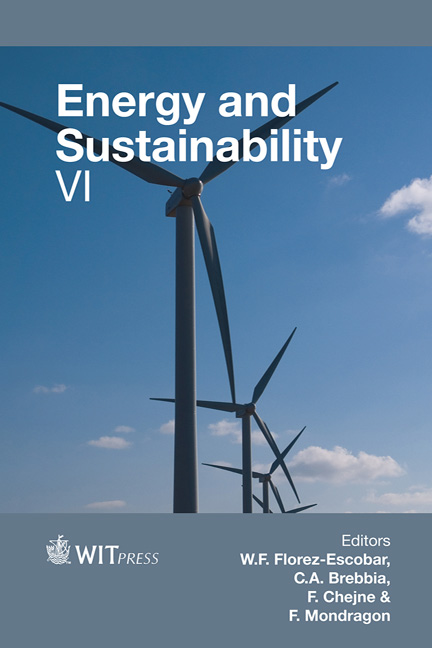Methods Of Low-pressure Cylinders Throughput Improvement For Construction Of Ultra-high Capacity Generation Units
Price
Free (open access)
Transaction
Volume
195
Pages
12
Page Range
149 - 160
Published
2015
Size
1,029 kb
Paper DOI
10.2495/ESUS150131
Copyright
WIT Press
Author(s)
A. Zaryankin, A. Rogalev, I. Garanin, S. Osipov
Abstract
State-of-the art power plant designs are based on generating unit capacities of 1200 MW. Innovative low-pressure (LP) cylinder designs with increased throughput are viewed among key approaches to further capacity improvement. This paper is specifically concerned with improving LP throughput.
Supported by computations, this paper examines three throughput-maximizing LP cylinder concepts enabling the throughput of a single outlet to be increased by 40%, thereby raising unit power capacity to 1800–2000 MW. These include a cylinder with a 1400 mm final-stage blade, a cylinder with flow reverse downstream of penultimate stage and a two-tier LP cylinder. Each of these designs carries with it a distinctive combination of advantages and shortcomings.
A two-tier LP cylinder is shown by computations to be the best approach. It features best economy while providing the necessary strength. The use of a two-tier pass-through section in place of classical section enables the outlet section area to be increased from 11.3 m2 to 16.3 m2 while using 1200 mm long final stage blades in both cases. In this case, LP cylinders operate with an efficiency of 84% and the maximum turbine capacity may reach 2000 MW.
The use of LPCs with increased throughput allows us to construct new power units with ultra-high capacity and to improve the efficiency indicators of the units of the existing power range. Both of these directions contribute to the achievement of steady state of the energy sector by improving the ecology efficiency.
Keywords
low-pressure cylinder, steam turbine, two-tier cylinder





